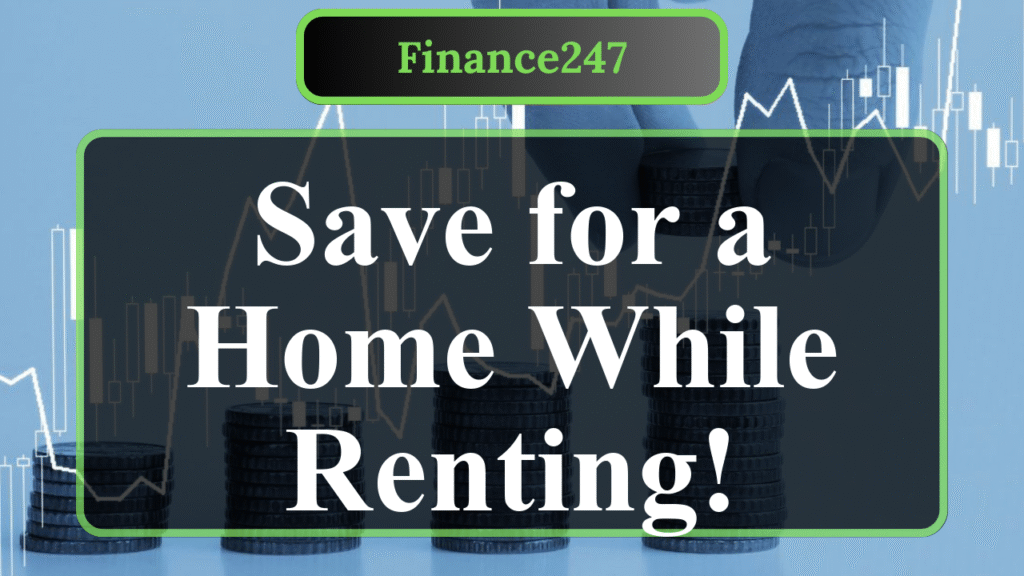“Saving for a home while paying high rent in the U.S. is tough but doable. This article outlines practical strategies like budgeting with the 50/30/20 rule, cutting non-essential expenses, boosting income through side gigs, and leveraging high-yield savings accounts. It also explores roommate options, debt reduction, and first-time homebuyer programs to help renters achieve homeownership.”
Strategies to Save for a Home Despite High Rent
Create a Realistic Budget
Adopt the 50/30/20 budgeting rule: allocate 50% of your after-tax income to essentials (rent, utilities, groceries), 30% to wants (dining out, entertainment), and 20% to savings and debt repayment. For example, if your monthly take-home pay is $4,000, aim to save $800 monthly. Use free budgeting apps like YNAB or Mint to track spending and identify areas to cut, such as subscriptions or frequent takeout. Automate savings by setting up direct deposits to a dedicated home fund to ensure consistency.
Cut Non-Essential Expenses
Examine discretionary spending to free up cash. Cancel unused subscriptions (e.g., streaming services costing $15-$50/month) and reduce dining out, which can save $200-$500 annually. Opt for energy-efficient appliances or LED bulbs to lower utility bills by 10-20%. Shop for cheaper auto insurance or cell phone plans, potentially saving $100-$300 yearly. Small changes, like brewing coffee at home instead of spending $5 daily, can add up to $1,800 annually.
Share Housing Costs
Living with a roommate can significantly reduce rent expenses. With the median U.S. rent at $1,968 in January 2025, splitting a two-bedroom apartment could save $500-$1,000 monthly compared to a one-bedroom. Platforms like Roomster or Craigslist can help find compatible roommates. Ensure lease agreements allow roommates to avoid penalties. Alternatively, consider moving to a less expensive neighborhood, where rents can be 10-30% lower outside city centers.
Boost Income with Side Gigs
Increase cash flow through side hustles like freelancing, ride-sharing, or pet sitting. Gig economy jobs, such as DoorDash or Uber, can earn $500-$1,500 monthly, depending on hours worked. Selling unused items online or hosting garage sales can generate extra funds. Direct all side income to a dedicated high-yield savings account to accelerate your down payment savings.
Pay Off High-Interest Debt
High-interest debt, like credit cards with an average APR of 13%, can hinder savings. Use the avalanche method to prioritize paying off debts with the highest interest rates first, reducing your debt-to-income (DTI) ratio. A lower DTI (ideally below 36%) improves mortgage eligibility and secures better rates. Consolidating debts into a lower-interest loan can also free up cash for savings.
Use High-Yield Savings Accounts
Place your down payment savings in a high-yield savings account (HYSA) offering 4-4.75% APY as of February 2025, compared to 0.5% for traditional savings accounts. For example, $10,000 in an HYSA at 4% earns $400 annually versus $50 in a regular account. Money market accounts or certificates of deposit (CDs) are also safe options, though CDs limit access until maturity.
Explore Rent-to-Own Options
Rent-to-own agreements allow you to rent a home with an option to buy later, often crediting a portion of rent (e.g., 20%) toward the purchase. For a $1,300 monthly rent over three years, this could contribute $9,360 to your down payment. However, these deals often include nonrefundable fees, so weigh costs carefully against traditional renting and saving.
Leverage First-Time Homebuyer Programs
First-time homebuyer programs, like FHA loans requiring only 3.5% down, can reduce savings needs. For a $396,900 median home (January 2025), that’s $13,891 versus $79,380 for a 20% down payment. State-specific programs, such as the California Housing Finance Agency or North Carolina Home Advantage Mortgage, offer grants or low-interest loans. Check eligibility through HUD.gov or local housing agencies.
Improve Your Credit Score
A higher credit score (ideally 670+) secures better mortgage rates and lower down payment requirements. Pay credit card bills on time and in full, and keep credit utilization below 30%. Check if your landlord reports rent payments to credit bureaus; if not, use services like Experian Boost to report on-time rent payments. Correct credit report errors to avoid higher interest costs.
Avoid Costly Pitfalls
Steer clear of low-down-payment loans like FHA or VA if they lead to high private mortgage insurance (PMI) fees (0.46-1.5% of the loan annually). Similarly, avoid rent-to-own homes with high fees or inflexible terms. Stick to a mortgage payment below 25% of your take-home pay on a 15-year fixed-rate loan to ensure affordability.
Disclaimer: This article provides general financial tips based on publicly available information and should not be considered personalized financial advice. Consult a financial advisor for guidance tailored to your situation. Sources include housing market data, personal finance websites, and government resources.


